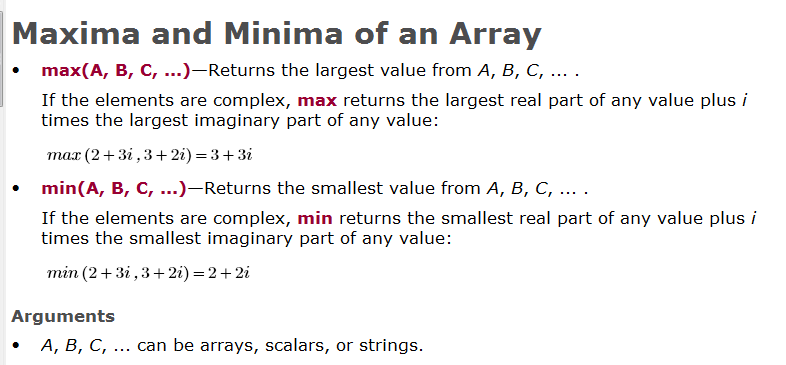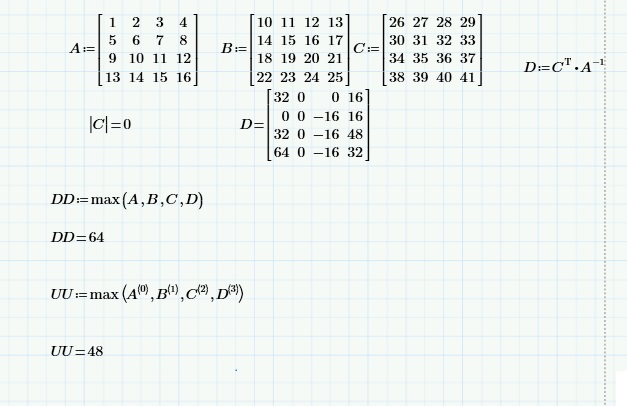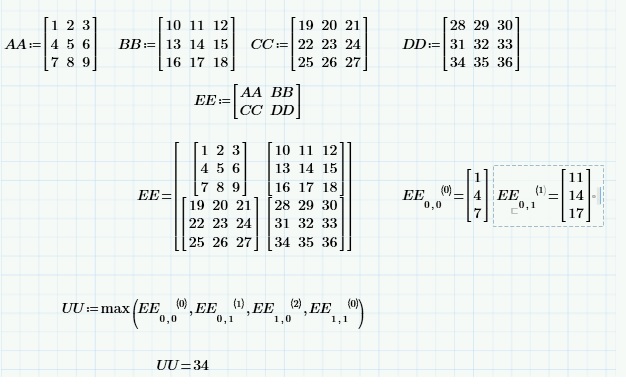Community Tip - Learn all about the Community Ranking System, a fun gamification element of the PTC Community. X
- Subscribe to RSS Feed
- Mark Topic as New
- Mark Topic as Read
- Float this Topic for Current User
- Bookmark
- Subscribe
- Mute
- Printer Friendly Page
Help and reality do not fit.
- Mark as New
- Bookmark
- Subscribe
- Mute
- Subscribe to RSS Feed
- Permalink
- Notify Moderator
Help and reality do not fit.
Error in getting the max dynamic value of corner post force origin from the containers stowed on hatch cover.

And according to the ”Help function” you can use Arrays?????? (the result of “IsArray” function is 1)

- Labels:
-
Statistics_Analysis
- Mark as New
- Bookmark
- Subscribe
- Mute
- Subscribe to RSS Feed
- Permalink
- Notify Moderator
Hello Gert,
you should check that the matrices have all the same size.

- Mark as New
- Bookmark
- Subscribe
- Mute
- Subscribe to RSS Feed
- Permalink
- Notify Moderator
The four arguments are four columns of the same matrix, so they should be all vectors with the same length.
As an alternative try :
max(submatrix(CPL.B6TH,ORIGIN,ORIGIN+rows(CPL.B6TH)-1,ORIGIN,ORIGIN+3)).
It could be that each of the CPL.B6TH<x> is a nested matrix, in which case the max function fails:

Success!
Luc
- Mark as New
- Bookmark
- Subscribe
- Mute
- Subscribe to RSS Feed
- Permalink
- Notify Moderator
In this case, just a small change, as follows:

- Mark as New
- Bookmark
- Subscribe
- Mute
- Subscribe to RSS Feed
- Permalink
- Notify Moderator
The question is what the OP wanted to determine the maximum of.
- Mark as New
- Bookmark
- Subscribe
- Mute
- Subscribe to RSS Feed
- Permalink
- Notify Moderator
And according to the ”Help function” you can use Arrays??????
Yes, and thats true.
But what the help does not tell you is, that you have to use arrays of scalars.
In other words - the arrays must have elements which can be compared by size and they even can be complex numbers (which can't be compared by size from a mathematical point of view) as described in the help.
You don't show it but the elements of your matrix where you provide the columns of seem to be not scalars. Maybe the are matrices themselves or something else.
You would have to provide mor information about your matrix and about what maximum you are looking for.
In this case it would be better to create a discussion/question and not a document as you did here, as we could not offer attachments like a Mathcad file when we comment on a document.
Furthermore comments to a document don't let it bubble up the list of recent post and therefore often are overlooked.
- Mark as New
- Bookmark
- Subscribe
- Mute
- Subscribe to RSS Feed
- Permalink
- Notify Moderator
"complex numbers (which can't be compared by size from a mathematical point of view)".
I know at least two ways to compare complex numbers by size:
1. The funny way how Mathcad and Prime have implemented it (see description above).
2. Comparing by their 'length' where length(c)=sqrt(Re(c)^2+Im(c)^2).
- Mark as New
- Bookmark
- Subscribe
- Mute
- Subscribe to RSS Feed
- Permalink
- Notify Moderator
This is an other approach:

Luc
- Mark as New
- Bookmark
- Subscribe
- Mute
- Subscribe to RSS Feed
- Permalink
- Notify Moderator
Would be fine if Gert would clarify some things. Or do we proceed by suppositions?
- Mark as New
- Bookmark
- Subscribe
- Mute
- Subscribe to RSS Feed
- Permalink
- Notify Moderator
Gerd,
maybe it helps you...

Volker





